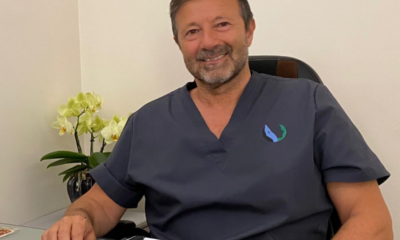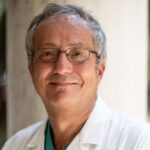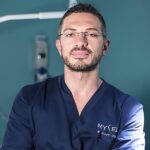Medical doctors and Surgeons
Breast cancer: a rebirth journey
“Breast cancer can become something precious.”
Dr. Gretha Grilz —specialist in plastic surgery and surgeon at the Breast Unit of the Cottolengo hospital in Turin— tells how many women who have recovered from cancer proudly bear the signs of surgery.
In the Piedmont region in northern Italy, there are 4,000-4,500 new cases per year. This means that 1 woman out of 8 can be diagnosed with breast cancer. Although the figures are increasing, the healing rate is very high. As a matter of fact, up to 90% of women suffering from cancer recover. This encouraging data is the result of the important ongoing prevention and screening efforts.
Risk factors and the work of Breast Units

There are several factors that can increase the risk of suffering from this disease. They may depend on age, reproductive, hormonal, dietary, metabolic, as well as family-related genetic factors. Following a healthy lifestyle, cutting out sugars, and exercising consistently can also be great allies to prevent this disease.
“Scientific studies show that women who mostly follow these recommendations —explains the surgeon— have a 40% reduced risk of developing cancer.”
Prevention, however, cannot be the only way to deal with breast cancer. This is why Breast Units play a vital role. These specialized centers are a model of assistance specializing in the diagnosis, treatment and psychophysical rehabilitation of women.
“Patients being taken care of by a team —explains the doctor— feel reassured. The therapy journey begins when the radiologist provides the biopsy report. Subsequently, the nurse takes charge of the patient to evaluate the overall clinical situation. Then a therapy is proposed, which then must be approved and shared with the whole multidisciplinary team.”
Therapy can be either neoadjuvant —i.e. it should be carried out before surgery— or surgery itself. If the latter option is chosen, one month after the operation, the patient is reassessed to begin the physiotherapy and scar treatment process.
“In the first month after surgery a postoperative bra needs to be worn 24/7. The patient is then taught how to handle the scars over the next three months. It is essential to use products that make scars softer to avoid the formation of adhesions”, explains the surgeon.
Conservative or radical surgery
The standard treatment of breast cancer involves a conservative intervention —i.e. removing just the diseased part, with radiotherapy.
“Conservative surgery has made significant progress —explains the surgeon— and relies on oncoplasty techniques.” This method is more advanced than traditional ones, because it involves a thorough knowledge of plastic surgery, and carries out incisions with a remarkable result.
Dr. Grilz adds: “Removing the tumor and safeguarding the patient’s body integrity are the main objectives to be pursued while planning this type of surgery. This is why a plastic surgeon is essential in the operating room, whether it is a conservative or a radical surgery.”
In this second case, which concerns 25% of diagnoses, the entire mammary gland is removed. However, it is possible to carry out a conservative mastectomy, preserving the skin mantle, which is useful for surgical repair.
In fact, in both interventions, a reconstructive process is involved: “The patient is also offered symmetrization of the breasts, which has not only a cosmetic value but also a functional one.”
Rebirth after cancer
“The appearance of the breast, and its beauty, represent a fundamental aspect of a woman’s identity,” points out the doctor. For this reason, it is necessary to deal with breast pathologies with a global approach, also considering the significant psychological implications.
Breast cancer, in fact, affects emotional, work and social relationships, compromising the quality of life of many women. This disease is a trauma and a disruptive element in a woman’s life.
“The healing process helps to go back to the everyday life, to hope, and to plan for the future. At the end of this journey —concludes Grilz— the patient experiences a rebirth.”




































